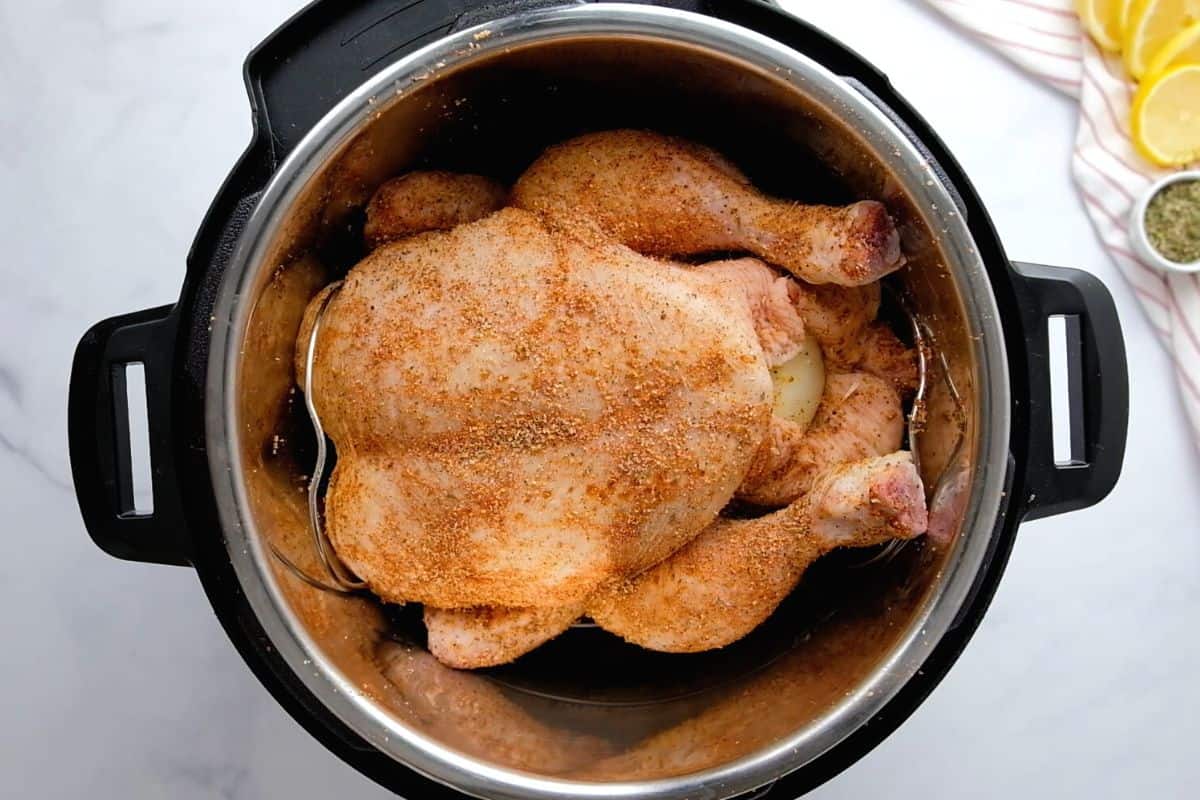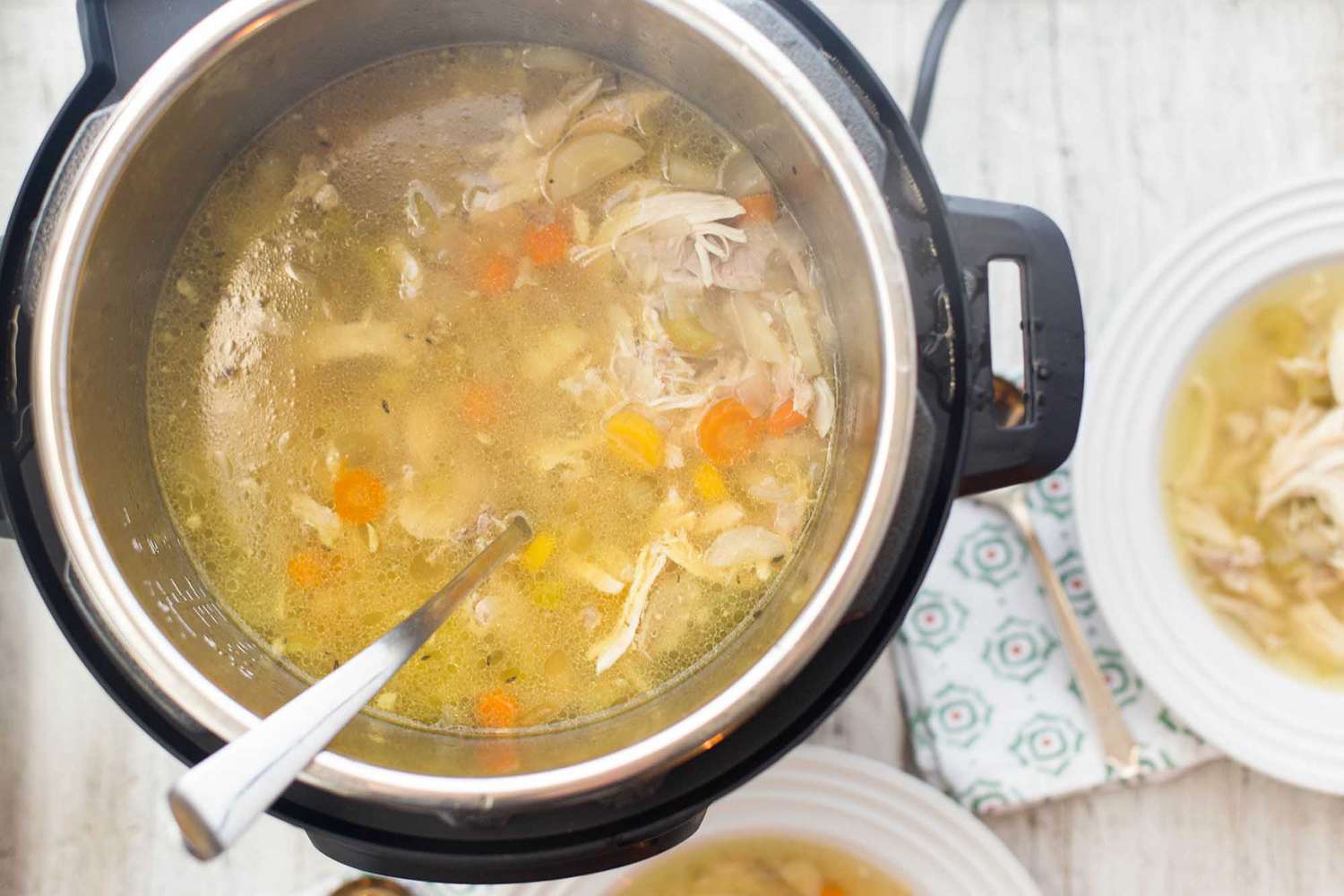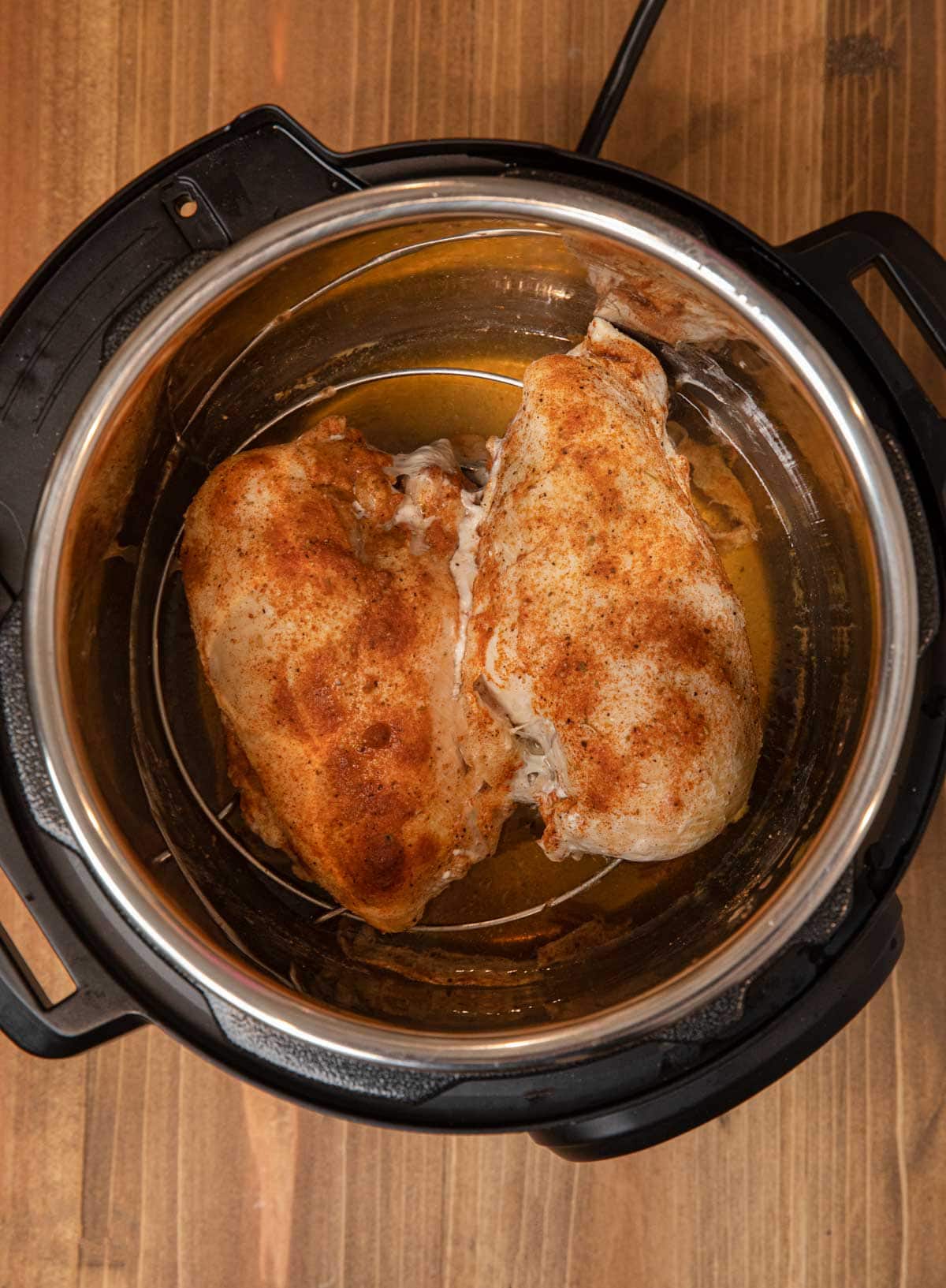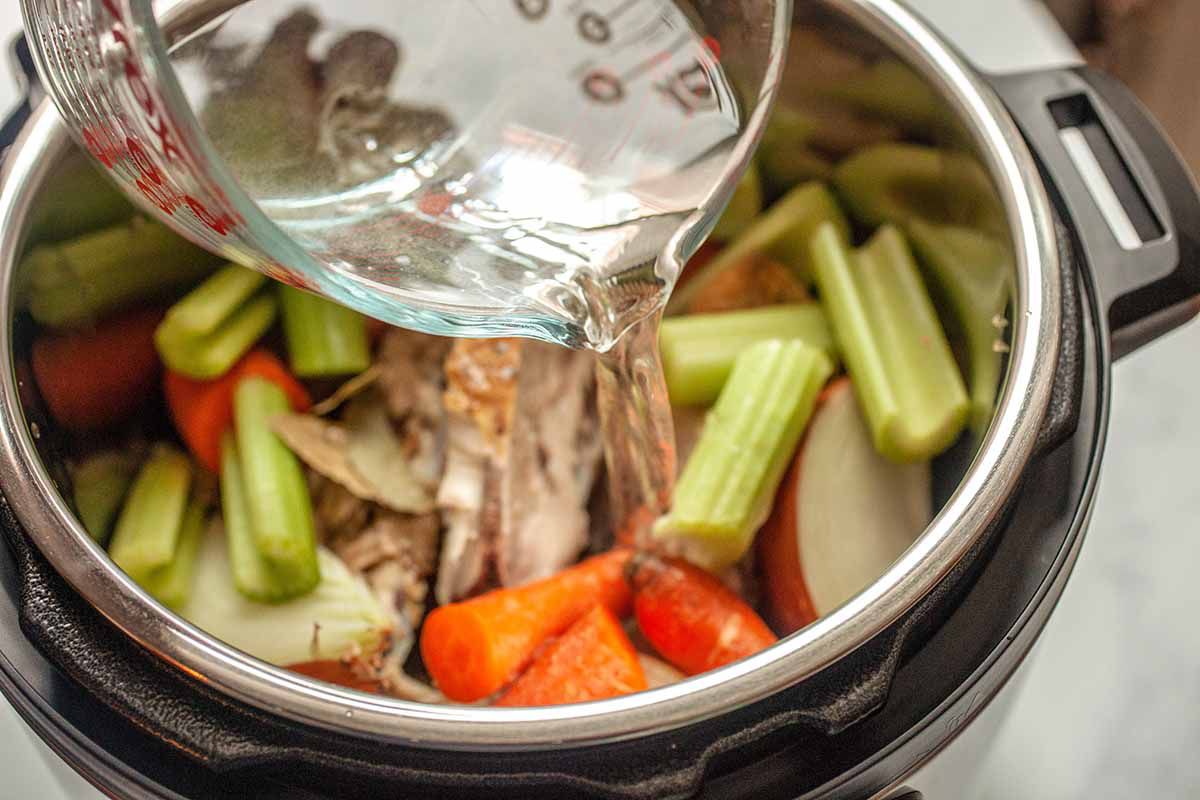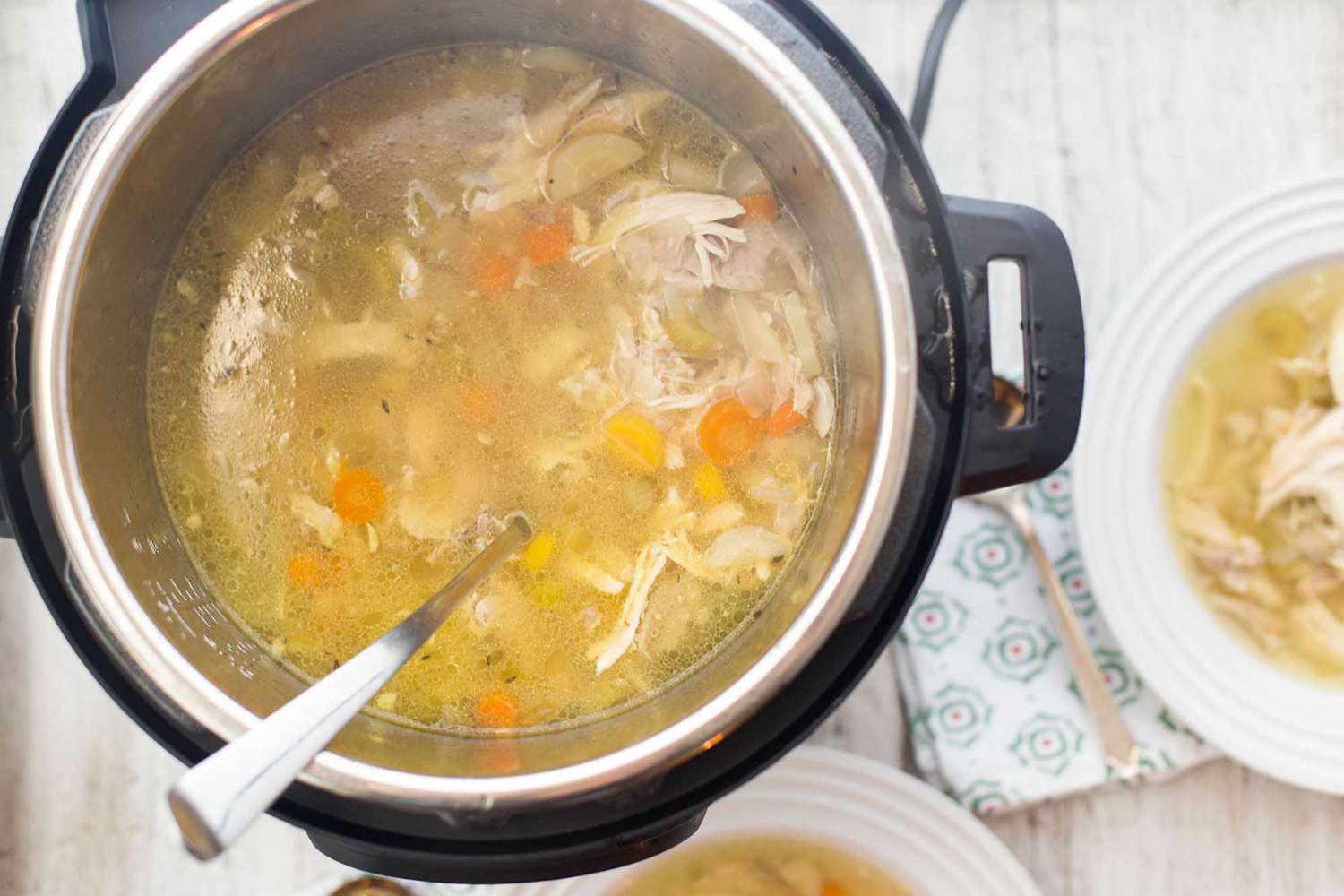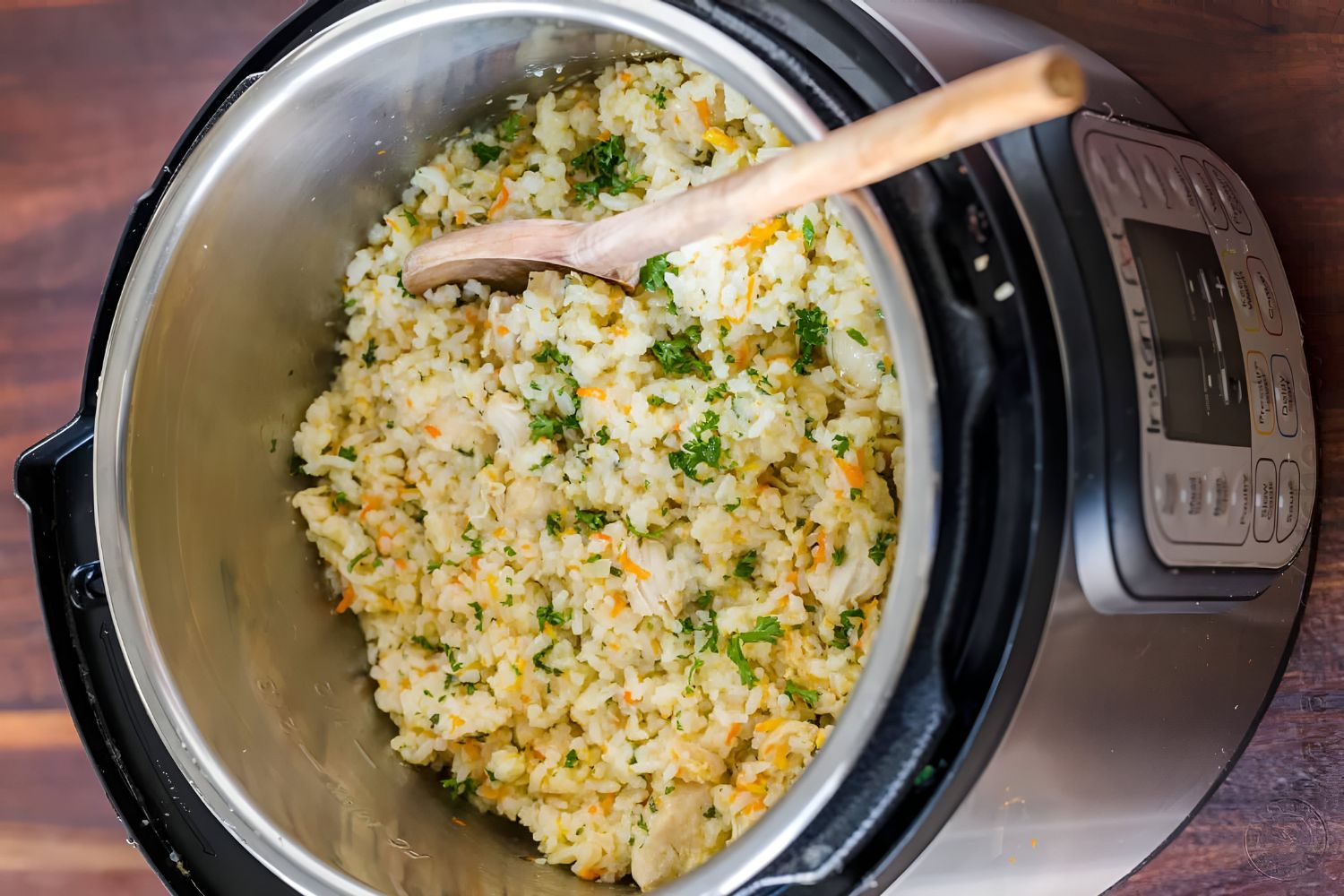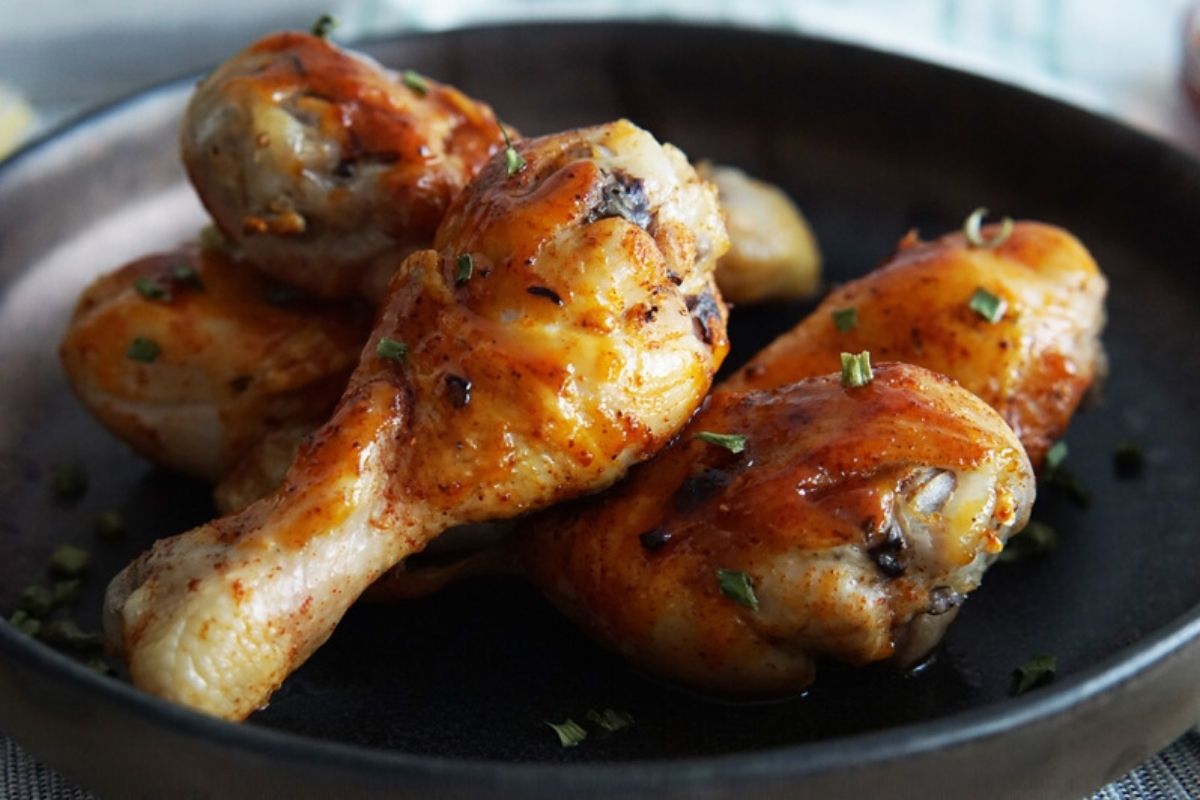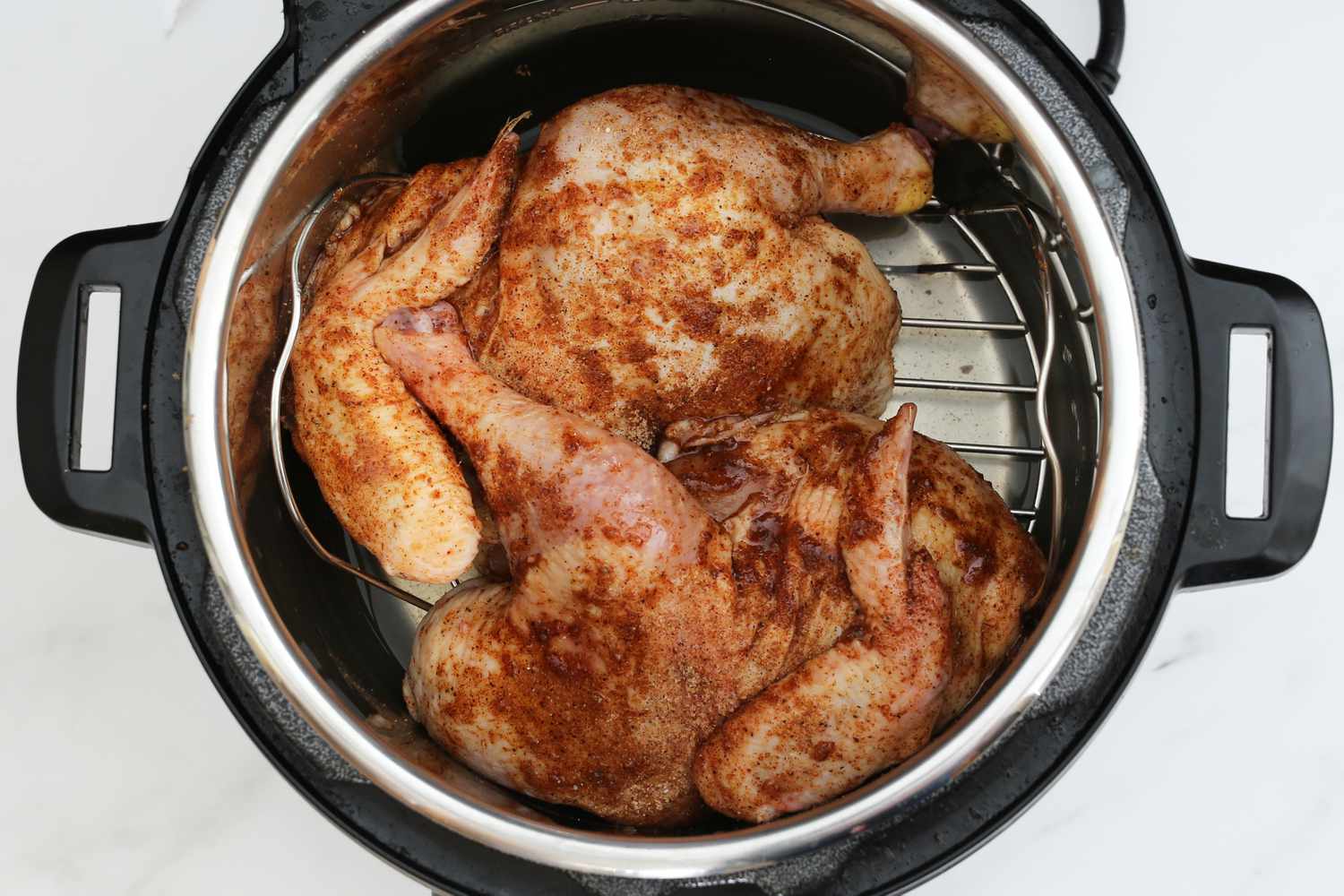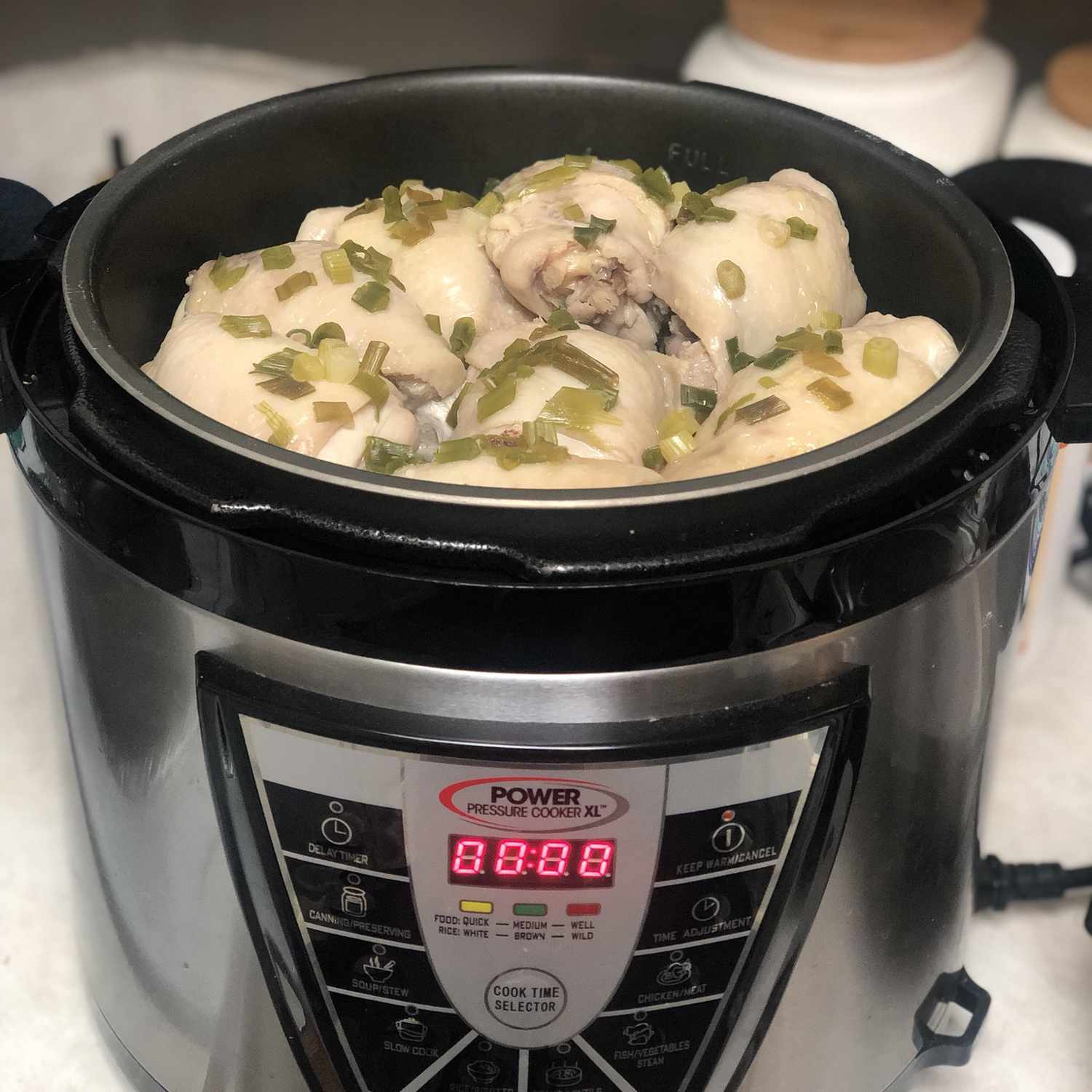Introduction
Welcome to the world of electric pressure cooking, where you can effortlessly cook delicious and tender chicken in a fraction of the time compared to traditional cooking methods. Whether you’re a busy professional, a parent juggling multiple responsibilities, or simply looking for a convenient way to prepare meals, the electric pressure cooker is a versatile kitchen appliance that can make your life easier.
With its sealed chamber and high-pressure cooking environment, an electric pressure cooker locks in the flavors of your ingredients, resulting in succulent and flavorful dishes. Cooking chicken in an electric pressure cooker allows you to achieve perfectly cooked meat with minimal effort and time.
In this article, we will explore the factors to consider when cooking chicken in an electric pressure cooker, the cooking times for different cuts of chicken, tips for cooking frozen chicken, incorporating vegetables, using the sauté function, and provide you with some helpful tips to ensure your chicken turns out perfectly every time.
So, whether you’re a pressure cooking novice or a seasoned pro, grab your apron and let’s dive into the wonderful world of cooking chicken in an electric pressure cooker!
Factors to Consider
When cooking chicken in an electric pressure cooker, there are several factors you should consider to achieve the best results. These factors include the size of the chicken pieces, the desired level of doneness, and the type of recipe you’re preparing.
Firstly, the size of the chicken pieces is crucial in determining the cooking time. Smaller pieces such as chicken tenders or cubed chicken will cook faster compared to larger pieces like chicken breasts or whole chicken. It’s important to adjust the cooking time accordingly to ensure that the chicken is thoroughly cooked without becoming dry or overcooked.
Secondly, the desired level of doneness is important for both taste and food safety. Chicken should always be cooked to an internal temperature of 165°F (74°C) to ensure that it is safe to consume. However, depending on personal preference, you may want to cook the chicken to a different level of tenderness. Some prefer their chicken to be fall-off-the-bone tender, while others prefer it to be slightly firmer. Adjust the cooking time based on your desired level of doneness.
Lastly, the type of recipe you’re preparing will also impact the cooking time. Recipes that require additional ingredients or longer cooking times, such as soups or stews, will naturally require more time to cook the chicken. On the other hand, recipes that require less liquid or shorter cooking times, like stir-fry or sautéed chicken, will have a shorter cooking time.
By considering these factors, you can ensure that your chicken is cooked perfectly in your electric pressure cooker, regardless of the recipe you’re using. Experiment with different cooking times and adjustments to find your preferred level of doneness and achieve mouthwatering results with every meal.
Different Cuts of Chicken and Cooking Times
When cooking chicken in an electric pressure cooker, it’s essential to be aware of the different cuts of chicken and their corresponding cooking times. This knowledge will help you determine the appropriate cooking time for each cut, resulting in perfectly cooked chicken every time.
Chicken Breasts: Chicken breasts are a versatile and lean cut of meat. They are usually boneless and cook relatively quickly in an electric pressure cooker. For boneless, skinless chicken breasts, a cooking time of around 6-8 minutes on high pressure is typically sufficient. However, if you have thicker chicken breasts, you may need to increase the cooking time by a couple of minutes to ensure they are fully cooked.
Chicken Thighs: Chicken thighs are known for their extra juiciness and tenderness. Whether bone-in or boneless, chicken thighs require slightly longer cooking times than chicken breasts. For bone-in chicken thighs, a cooking time of around 10-12 minutes on high pressure is generally recommended. Boneless chicken thighs may require a slightly shorter cooking time, around 8-10 minutes, as they cook faster due to their smaller size.
Whole Chicken: Cooking a whole chicken in an electric pressure cooker can be a time-saving and convenient option. The cooking time for a whole chicken will depend on its size. As a general guideline, you can estimate a cooking time of around 6 minutes per pound of chicken. For example, a 4-pound chicken will require approximately 24 minutes of cooking time under high pressure. However, it’s always important to use a meat thermometer to check for an internal temperature of 165°F (74°C) to ensure the chicken is fully cooked throughout.
Chicken Wings: Chicken wings are a popular finger food, perfect for parties and game nights. Cooking chicken wings in an electric pressure cooker is a fantastic way to achieve tender and flavorful results. A cooking time of around 10-12 minutes on high pressure is typically sufficient for chicken wings. You may choose to finish them under the broiler for a few minutes to crisp up the skin before serving.
By understanding the cooking times for different cuts of chicken, you can tailor your cooking approach to each cut, resulting in delicious and well-cooked chicken dishes.
Bone-In Chicken
Cooking bone-in chicken in an electric pressure cooker can yield incredibly flavorful and tender results. Whether you’re using chicken drumsticks, thighs, or a whole chicken with the bones included, using the right cooking technique will ensure that the meat is cooked to perfection.
When cooking bone-in chicken, it’s important to allow for a slightly longer cooking time compared to boneless chicken. The bones in the meat can affect the heat distribution, so a few extra minutes under pressure will help ensure that the chicken is fully cooked.
A general guideline for cooking bone-in chicken in an electric pressure cooker is around 10-12 minutes per pound of chicken. For example, if you’re cooking a 3-pound chicken with the bones in, you should set the pressure cooker for approximately 30-36 minutes on high pressure. This will ensure that the chicken is cooked through while still retaining its juiciness and tenderness.
It’s also important to note that if you’re using larger pieces of bone-in chicken, such as chicken thighs or drumsticks, you may need to increase the cooking time slightly. This will ensure that the meat near the bone is fully cooked and reaches the desired level of tenderness.
After the initial cooking time, it’s recommended to perform a natural pressure release for about 5-10 minutes. This allows the chicken to continue cooking in the residual heat and helps the flavors to meld together.
Once the pressure has naturally released, carefully remove the chicken from the cooker and use a meat thermometer to ensure it has reached an internal temperature of 165°F (74°C). This ensures that the chicken is safe to eat and free from any harmful bacteria.
Whether you’re making a comforting batch of chicken soup or preparing a flavorful curry, bone-in chicken cooked in an electric pressure cooker will result in a delicious and satisfying meal.
Boneless Chicken
Cooking boneless chicken in an electric pressure cooker is a quick and convenient way to prepare tender and flavorful meat for a variety of dishes. Whether you’re using boneless chicken breasts, chicken thighs, or chicken tenders, the electric pressure cooker can help you achieve perfectly cooked chicken in no time.
Boneless chicken generally cooks faster compared to bone-in chicken, as there are no bones to slow down the cooking process. The cooking time will vary depending on the thickness and size of the chicken pieces.
For boneless chicken breasts, a cooking time of around 6-8 minutes on high pressure is usually sufficient. However, if your chicken breasts are particularly thick, you may need to increase the cooking time by a couple of minutes to ensure they are fully cooked. It is always advisable to use a meat thermometer to check for an internal temperature of 165°F (74°C) to ensure the chicken is cooked through.
When using boneless chicken thighs, a cooking time of around 8-10 minutes on high pressure is generally recommended. The thigh meat has more fat and connective tissue, which contributes to its tenderness and flavor. Similar to chicken breasts, it’s important to check for an internal temperature of 165°F (74°C) to ensure the chicken is fully cooked.
If you’re using boneless chicken tenders, which are smaller and thinner, a shorter cooking time of around 4-6 minutes on high pressure may be sufficient. The smaller size of the tenders allows them to cook quickly, so it’s important to keep an eye on them to avoid overcooking.
After the cooking time, it’s important to perform a quick pressure release or a natural pressure release, depending on the recipe and your preference. Once the pressure has been released, remove the chicken from the pressure cooker and use it as desired in your recipe.
Boneless chicken cooked in an electric pressure cooker is not only convenient but also allows you to retain the natural flavors and juiciness of the meat. Whether you’re making a stir-fry, pasta dish, or flavorful curry, boneless chicken cooked in an electric pressure cooker will bring maximum flavor and tenderness to your meal.
Cooking Frozen Chicken
We’ve all been there – forgetting to defrost the chicken before cooking. But fret not! With an electric pressure cooker, you can cook frozen chicken quickly and safely, saving you time and ensuring a delicious meal.
Cooking frozen chicken in an electric pressure cooker is not only convenient, but it also helps to lock in the flavors and moisture of the meat. However, there are a few crucial steps to follow to ensure that the chicken cooks evenly and reaches the proper internal temperature.
When cooking frozen chicken, it’s important to add an additional 50% to the cooking time compared to cooking thawed chicken. For example, if a recipe states that fresh chicken breasts should be cooked for 10 minutes, you’ll need to cook frozen chicken breasts for 15 minutes. This extra time accounts for the fact that the chicken is frozen and will take longer to reach the desired level of doneness.
It’s also essential to adjust the liquid in the recipe. Since frozen chicken releases some moisture during cooking, you may need to reduce the amount of additional liquid or sauce used in the recipe. This will prevent the dish from becoming too watery or diluted with excess liquid.
Aim for a natural pressure release after the cooking time to allow the chicken to continue cooking and remain tender. This natural pressure release also helps to ensure that the chicken is evenly cooked throughout.
To ensure the safety of the chicken, always use a meat thermometer to check the internal temperature. The chicken should reach an internal temperature of 165°F (74°C) to ensure that it is fully cooked and safe to eat.
Remember that the cooking time can vary depending on the size and thickness of the frozen chicken. Thicker cuts may require additional cooking time, while smaller pieces may cook faster.
Cooking frozen chicken in an electric pressure cooker provides a convenient solution when you’re short on time or forgot to defrost your chicken. Just adjust the cooking time, monitor the liquid content, and ensure the chicken reaches the proper internal temperature, and you’ll have a delicious and hassle-free meal on your plate.
Cooking Chicken with Vegetables
When it comes to cooking chicken in an electric pressure cooker, adding vegetables to the mix can elevate the flavors and make the dish even more nutritious. Not only does cooking chicken with vegetables create a well-balanced meal, but it also allows the flavors to meld together, resulting in a delicious and satisfying dish.
The key to successfully cooking chicken with vegetables in an electric pressure cooker is to consider the cooking times of both the chicken and the vegetables. Since vegetables tend to cook faster than chicken, it’s important to choose vegetables that can withstand the pressure cooking process without becoming overly soft or mushy.
Hardier vegetables like carrots, potatoes, and broccoli can handle the higher pressure and longer cooking times without losing their texture. Add these vegetables into the pressure cooker along with the chicken at the beginning of the cooking process.
Softer vegetables like bell peppers, zucchini, or peas can become too mushy if cooked for the same amount of time as the chicken. It’s best to add them in after the chicken has finished cooking and the pressure has been released. Simply stir them in and let the residual heat of the dish cook them to perfection.
Another option is to use a steamer basket inside the electric pressure cooker to cook the chicken and vegetables separately. This method allows you to control the cooking time of each component and prevent overcooking.
Consider the size of the vegetables when preparing them for the pressure cooker. Smaller pieces will cook faster, while larger chunks may require a bit more time.
Finally, consider the seasonings and spices you’re using to complement the chicken and vegetables. Herbs like rosemary, thyme, or basil can add a delightful aroma and flavor to the dish. Don’t forget to season with salt and pepper to enhance the taste of both the chicken and vegetables.
By cooking chicken with vegetables in an electric pressure cooker, you can create a well-rounded and nourishing meal with minimal effort. Experiment with different combinations of vegetables and spices to discover new flavor profiles and enjoy wholesome and flavorful dishes.
Using the Saute Function
One of the great features of an electric pressure cooker is the sauté function, which allows you to brown or sear the chicken before pressure cooking it. Utilizing the sauté function not only adds depth of flavor to the chicken but also helps to develop a rich and savory base for your dish.
When using the sauté function, start by selecting the desired temperature or heat level. Typically, there are multiple heat settings available, such as low, medium, and high. The choice of heat level depends on the recipe and the desired level of browning or caramelization you want to achieve.
Before adding the chicken to the pot, make sure to preheat the electric pressure cooker on the sauté function. This ensures that the chicken will sizzle and brown when it hits the hot surface, creating a flavorful crust.
When adding the chicken, make sure to pat it dry with a paper towel. This step helps to remove excess moisture from the surface and allows the chicken to brown more effectively. Season the chicken with your desired spices or marinade and carefully place it into the hot pot.
Allow the chicken to cook on one side for a few minutes until it develops a golden-brown color. Then, flip the chicken using tongs or a spatula to brown the other side. This process helps to lock in the juices and adds a lovely caramelized flavor to the chicken.
Once the chicken is fully browned, you can continue with the pressure cooking process. Follow the recipe instructions for adding any additional ingredients, liquid, and selecting the appropriate cooking time and pressure settings.
Using the sauté function not only adds a delicious flavor to the chicken but also allows you to deglaze the pot before pressure cooking. This involves adding a liquid, such as broth, wine, or water, to the pot after browning the chicken. As the liquid simmers, it helps to release the flavorful caramelized bits from the bottom of the pot, which can then be incorporated into the overall dish.
By utilizing the sauté function in an electric pressure cooker, you can take your chicken dishes to the next level, adding depth and richness of flavor. So, don’t skip this important step and enjoy the mouthwatering results it brings to your culinary creations.
Tips for Cooking Chicken in an Electric Pressure Cooker
Cooking chicken in an electric pressure cooker can be a game-changer in terms of convenience and flavor. To ensure that your chicken turns out perfectly every time, here are some helpful tips to keep in mind:
- Season the chicken: Before cooking, be sure to season the chicken with your desired spices, herbs, or marinade. This step will infuse flavor into the meat and enhance the overall taste of the dish.
- Use the trivet: Placing a trivet or rack at the bottom of the pressure cooker can help elevate the chicken, preventing it from sticking to the bottom and ensuring even cooking.
- Do not overfill the pressure cooker: It’s important not to fill the pressure cooker beyond the maximum fill line indicated. Overfilling can affect the cooking time, pressure building, and quality of the end result.
- Allow for natural pressure release: After the cooking time, allow the pressure to release naturally for a few minutes. This helps the chicken to continue cooking and helps to retain its moisture and tenderness.
- Check the internal temperature: Always use a meat thermometer to check the internal temperature of the chicken. It should reach a minimum temperature of 165°F (74°C) to ensure that it is cooked through and safe to eat.
- Experiment with different liquids: Get creative with the liquids you use in the pressure cooker. You can use broth, stock, wine, or even citrus juice to add flavor and moisture to the chicken.
- Add creaminess at the end: If you desire a creamy sauce or texture, stir in some cream, coconut milk, or sour cream to the cooked chicken once it has been released from the pressure.
- Allow for resting time: After removing the chicken from the pressure cooker, allow it to rest for a few minutes before serving. This helps the juices distribute evenly throughout the meat, resulting in a more flavorful and tender chicken.
- Adjust cooking times for preferences: If you prefer your chicken to be more fall-off-the-bone tender, increase the cooking time slightly. If you prefer it to be firmer, decrease the cooking time slightly. Experiment to find your preferred level of doneness.
- Don’t forget the garnishes: Before serving, consider adding some fresh herbs, a squeeze of citrus, or a sprinkle of grated cheese as a final touch to your chicken dish. These garnishes can add brightness and elevate the flavors.
By keeping these tips in mind, you can achieve delicious, tender, and perfectly cooked chicken in your electric pressure cooker. So, get creative, explore different recipes and flavors, and enjoy the convenience and tastiness of cooking chicken with this fantastic kitchen appliance.
Conclusion
Cooking chicken in an electric pressure cooker is a game-changer for busy individuals who crave delicious and tender meals without spending hours in the kitchen. With the ability to lock in flavors, reduce cooking times, and achieve succulent results, the electric pressure cooker has become a staple appliance in many households.
Throughout this article, we explored various aspects of cooking chicken in an electric pressure cooker, including factors to consider, cooking times for different cuts of chicken, cooking frozen chicken, incorporating vegetables, utilizing the sauté function, and essential tips for success.
By considering factors such as the size of the chicken pieces, desired level of doneness, and the type of recipe being prepared, you can adjust the cooking time accordingly to achieve superb results. Understanding the specific cooking times for different cuts of chicken helps ensure that each piece is cooked to perfection, from bone-in chicken to boneless chicken.
When facing the challenge of cooking frozen chicken, the electric pressure cooker comes to the rescue, allowing you to cook the chicken safely and efficiently. Combining chicken with vegetables not only adds nutritional value but also enhances the overall flavor profile of the dish. Utilizing the sauté function adds depth and richness to the chicken, while following essential tips ensures a successful cooking experience every time.
So, whether you’re whipping up a quick weeknight dinner or preparing a flavorful weekend meal, the electric pressure cooker is a versatile tool that can help you achieve amazing results with chicken. From juicy and tender chicken breasts to fall-off-the-bone thighs, the electric pressure cooker allows you to savor delicious chicken dishes with ease.
Remember to experiment with different flavors, spices, and cooking techniques to create a variety of mouthwatering chicken recipes. With a little practice and creativity, you’ll be able to create satisfying dishes that will impress your family and friends.
So, embrace the convenience and discover the wonders of cooking chicken in an electric pressure cooker. Get ready to enjoy flavorful, tender, and hassle-free chicken meals that will leave you satisfied and eager for more.







